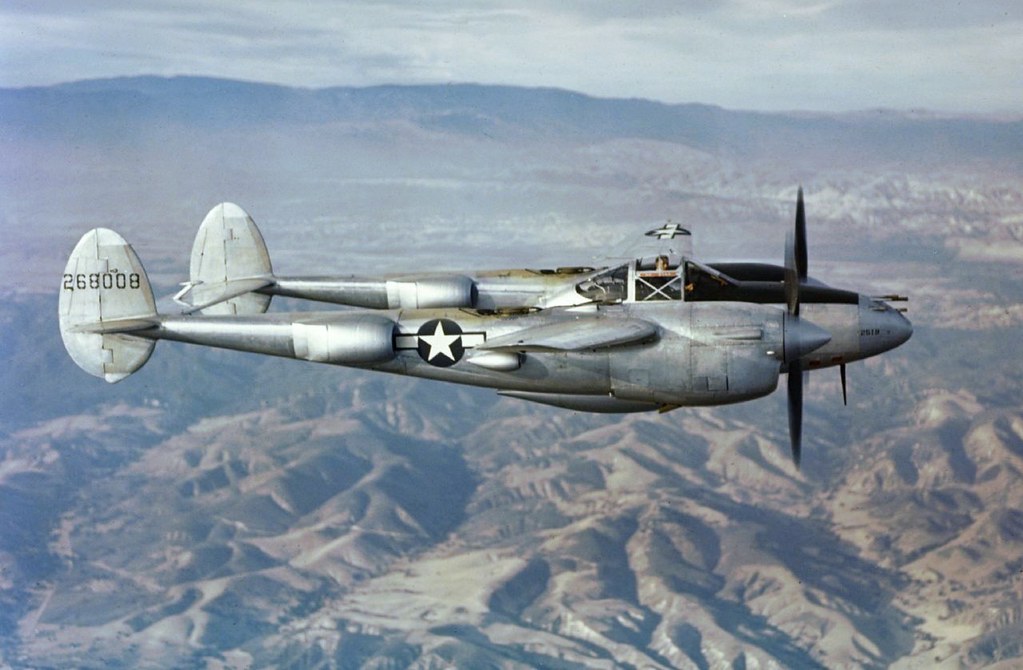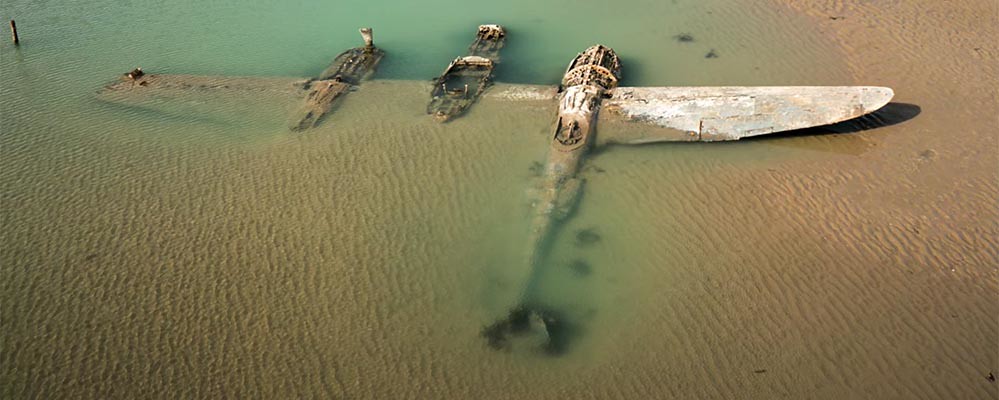The Maid of Harlech: the P-38 fighter that was buried on a beach for 65 years
The waves of the sea, the sand and the passage of time are capable of burying the most unexpected objects, even a fighter plane.
On July 31, 2007, a resident of the county of Gwynedd, in Wales, found a curious object on the beach of Harlech. What looked like the wing of an old plane protruded from the sand. He photographed his find and reported it to the British Ministry of Defense, but from there they told him that it was surely the remains of a drone used as a target for anti-aircraft artillery practices at a nearby RAF base in the 1950s.

Dissatisfied with the ministry's response, the villager sent the information to a local newspaper, which published the photo of the wing sticking out of the sand. That news caught the attention of Matt Rimmer, a local historian specializing in World War II, who instantly recognized which plane that wing belonged to: it was a Lockheed P-38F Lightning long-range fighter from World War II, an aircraft used in that time by the United States Army Air Force (USAAF). After contacting the resident who had made the find, they revisited the site. The sand had uncovered more parts of the old plane.
But how did that plane get there? It all started on September 27, 1942 at 2:00 p.m. Second Lieutenant Robert F. Elliot. of the USAAF 14th Fighter Group, took off from the RAF airfield in Wales with the P-38F 41-7677, with the mission of towing a target for an exercise. As usual, he took off using the plane's reserve tanks, but 15 minutes into the flight he forgot to switch to the plane's main tanks.

55 minutes into the flight, the left engine lost power. The pilot believed that it was due to a propeller failure. He decided to return to the airfield. He dropped the target, and two miles from the base of it, the right engine died. He decided to look for a place to make an emergency landing and saw Harlech beach. Unfortunately, the plane ended up landing on the beach area submerged by seawater. Elliot survived the crash. Although there were plans to salvage the aircraft, in October 1942 the 14th Fighter Group was deployed to North Africa. There Lieutenant Elliot died in combat on December 5 of that year. His remains were never found.
As for the Harlech P-38, because of the war, civilians were banned from the beaches, and newspapers were also ordered not to report military accidents. Three years after the accident, when the beaches were reopened after the end of the war, the plane had already been engulfed by the sand and the sea. No neighbor in the area knew there was a plane there. It was buried for 65 years, until the changing tides brought it to light.

British law prohibits tampering with, damaging, moving, removing or digging up any part of a crashed military aircraft in the UK, so Matt Rimmer had to seek permission from the UK Ministry of Defense to recover the aircraft. After obtaining that license, Rimmer is currently raising funds on his website to get it back. The aircraft is now known by locals as the "Maid of Harlech", a nickname inspired by a figure from Celtic mythology, the "mermaids" (sea maidens), beautiful women who inhabited the waters (both the sea such as lakes and rivers).
You can see here an interesting report published by Mark Felton about this plane and its curious discovery:
|
Don't miss the news and content that interest you. Receive the free daily newsletter in your email: Click here to subscribe |
- Lo más leído
- A British fairytale ruin: the abandoned shoe house on the Isle of Wight
- The interior of the Statue of Liberty torch and the sabotage that canceled its visits
- A virtual tour of ancient Rome in full color, just as it was in its heyday
- The supermassive black hole of Phoenix A, the biggest known light-devouring monster
- The unknown Soviet female cosmonaut who died on a mission: history or hoax?
- A large collection of Volkswagen cars hidden in an abandoned mine in Switzerland
- An old Soviet military plane abandoned from 1971 on a Russian island near Alaska

 ES
ES





Opina sobre esta entrada: